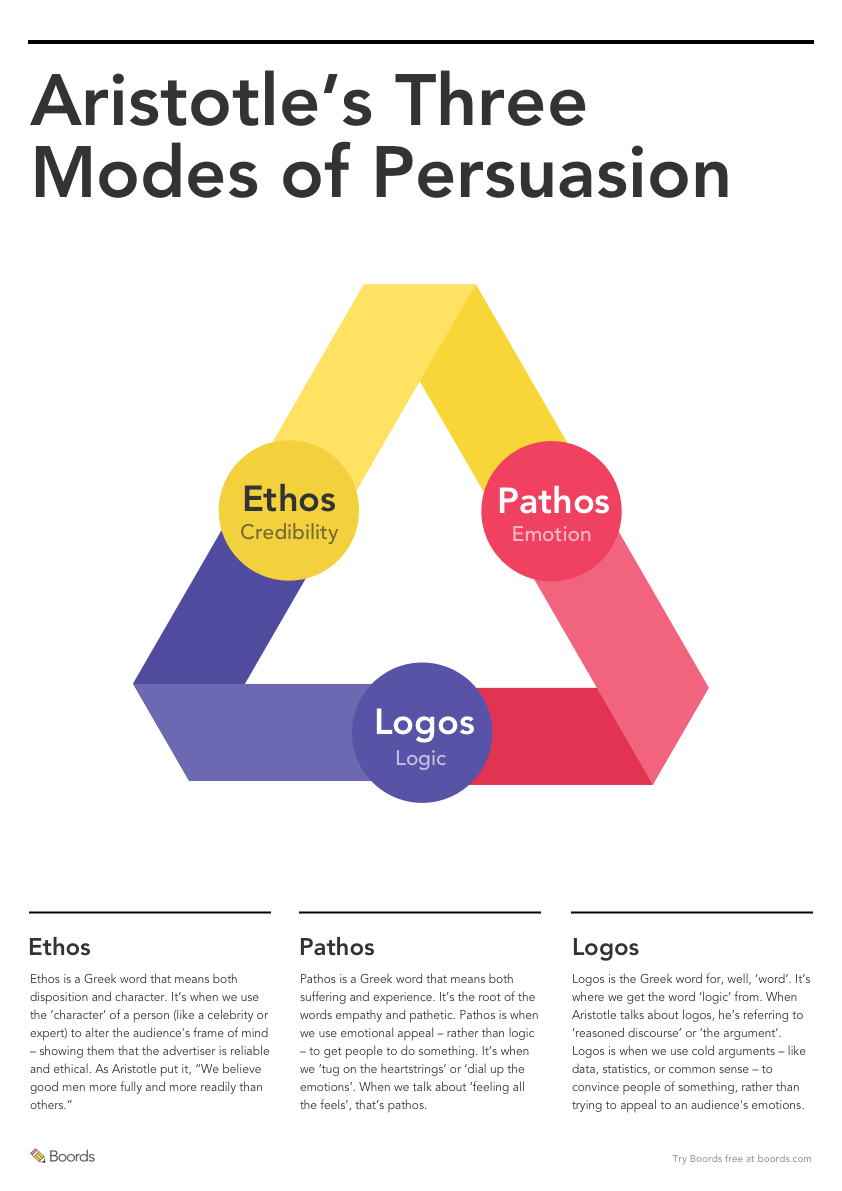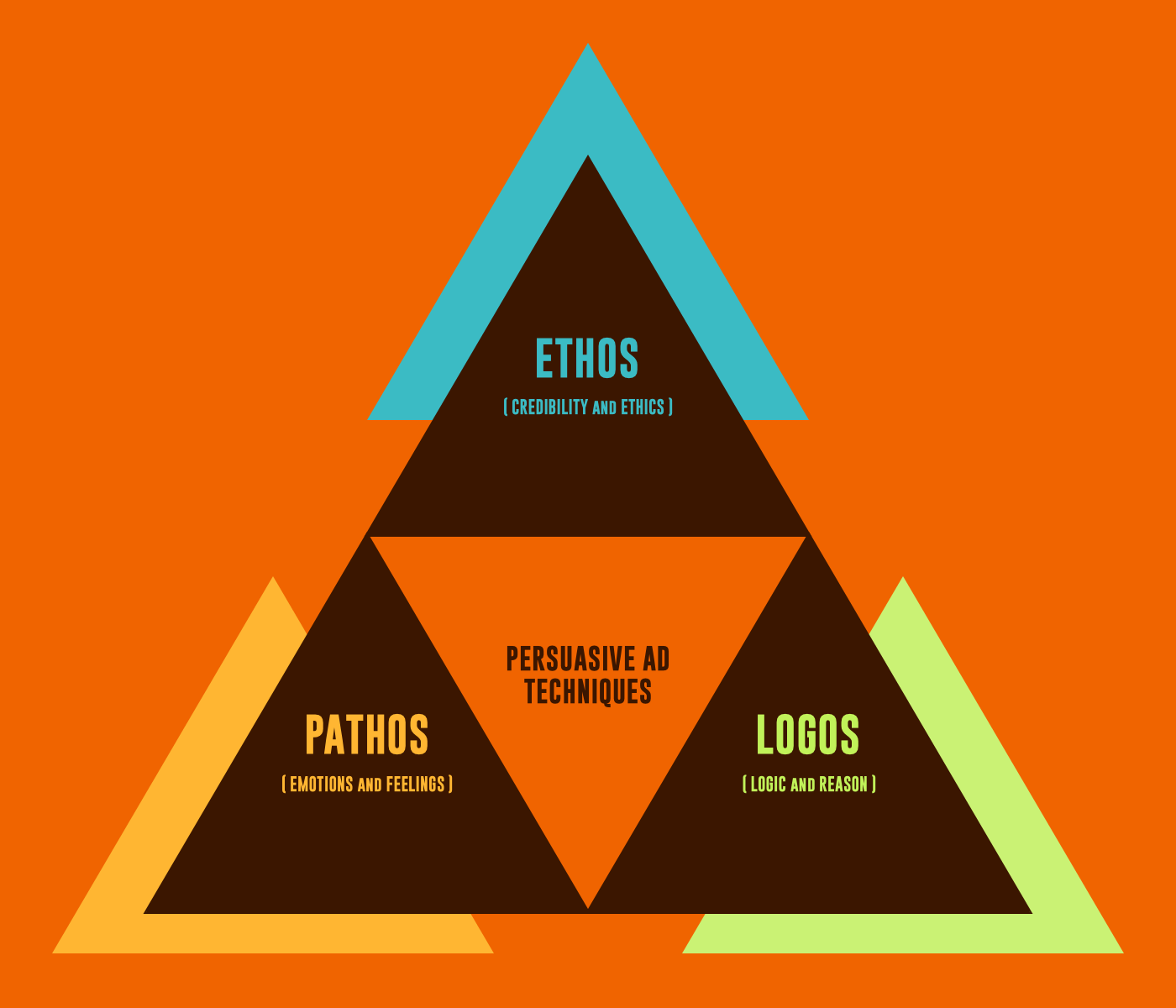You’ve probably seen those ads that hit you right in the feels or the ones that make you think, “This brand really gets me.” Ever wondered why some ads work like magic while others fall flat? Well, buckle up, because we’re diving deep into the world of persuasion through the power of ethos, pathos, and logos in advertising.
Let’s face it—advertising is more than just slapping a logo on a billboard. It’s about connecting with people, making them trust you, and convincing them to take action. Ethos, pathos, and logos are the secret weapons advertisers use to craft messages that stick. Whether you’re a marketer, a business owner, or just someone curious about how ads work, this guide is for you.
In today’s competitive market, knowing how to use ethos, pathos, and logos isn’t just an advantage—it’s essential. These three pillars of persuasion have been around since ancient Greece, but they’re still as relevant today as they were back then. So, let’s break it down and see how you can master the art of persuasion in your own advertising efforts.
Read also:Best Remote Ssh Iot Device Your Ultimate Guide To Secure Connectivity
What Are Ethos, Pathos, and Logos?
Before we dive into the nitty-gritty, let’s get the basics out of the way. Ethos, pathos, and logos are rhetorical strategies developed by Aristotle, the OG of persuasion. These concepts are like the holy trinity of advertising—they help you build trust, tug at heartstrings, and appeal to logic all at once. Here’s a quick rundown:
- Ethos: This is all about credibility. It’s the “why should I trust you?” factor. Brands use ethos to establish themselves as authorities in their field.
- Pathos: Pathos is where emotions come into play. It’s the “how can I make you feel?” part of the equation. Ads that make you laugh, cry, or feel inspired are using pathos.
- Logos: Logos is the logical side of things. It’s about presenting facts, stats, and reasoning to convince people. Think of it as the “here’s why this makes sense” approach.
Now that we’ve got the definitions out of the way, let’s explore how these elements work together to create powerful advertising campaigns.
Why Ethos Pathos Logos in Advertising Matters
Here’s the deal—consumers are bombarded with thousands of ads every single day. In this noisy world, standing out is harder than ever. But when you combine ethos, pathos, and logos, you create ads that resonate on multiple levels. They don’t just grab attention—they hold it and leave a lasting impression.
Ethos builds trust, pathos creates emotional connections, and logos appeals to reason. Together, they form a trifecta that can persuade even the most skeptical audience. Whether you’re selling a product, promoting a service, or raising awareness for a cause, these strategies can help you achieve your goals.
How to Use Ethos in Advertising
Ethos is all about establishing authority and credibility. People are more likely to trust a brand if they believe it knows what it’s talking about. Here’s how you can incorporate ethos into your advertising:
- Use expert endorsements or testimonials from trusted figures in your industry.
- Showcase awards, certifications, or partnerships that prove your expertise.
- Highlight your brand’s history and accomplishments to build trust over time.
For example, a skincare brand might feature dermatologists in their ads to show that their products are backed by science. Or a tech company might highlight partnerships with major corporations to demonstrate its reliability.
Read also:Unveiling Elizabeth Buckley Harrold Odonnell The Untold Story
Real-Life Examples of Ethos in Action
Let’s take a look at some brands that nail ethos in their advertising:
- Tesla: Elon Musk’s name alone carries a lot of weight. When Tesla runs ads, they don’t need to say much—they’ve already established themselves as leaders in innovation.
- Mayo Clinic: As one of the most trusted names in healthcare, the Mayo Clinic uses its reputation to promote its services. People trust them because they’ve been around for over a century.
These brands understand that credibility is key to winning over customers.
Mastering Pathos: Tapping Into Emotions
Pathos is where the magic happens. It’s the emotional connection that turns casual viewers into loyal customers. When you tug at heartstrings, you create a bond that’s hard to break. Here’s how to use pathos effectively:
- Tell compelling stories that resonate with your target audience.
- Use visuals and music to enhance the emotional impact of your ads.
- Create relatable characters or scenarios that viewers can see themselves in.
For instance, a charity might use heartwarming stories of people whose lives have been changed by donations. Or a car company might show families going on road trips to evoke feelings of adventure and togetherness.
Pathos in Action: Brands That Do It Right
Here are some examples of brands that excel at using pathos:
- Coca-Cola: Their “Share a Coke” campaign was all about connection. By personalizing bottles with people’s names, they made customers feel seen and valued.
- Puppy Love Ads: Who can resist a cute puppy? Brands like Purina use adorable animals to trigger feelings of joy and affection.
Pathos isn’t just about making people feel good—it’s about creating lasting memories that keep them coming back.
The Power of Logos: Appealing to Reason
While ethos builds trust and pathos tugs at heartstrings, logos appeals to the logical side of the brain. It’s the “here’s why this makes sense” argument that convinces people to take action. Here’s how to use logos in your advertising:
- Present clear and compelling data to support your claims.
- Use comparisons to show how your product or service stacks up against competitors.
- Highlight customer reviews and ratings to demonstrate real-world results.
For example, a fitness app might showcase studies proving the effectiveness of its workout plans. Or a financial service might use charts and graphs to explain how their investments outperform the market.
Logos in Action: Brands That Nail the Logic
Check out these brands that use logos to persuade their audience:
- Dollar Shave Club: Their ads don’t just rely on humor—they also highlight the savings customers can achieve by switching to their service.
- Apple: Apple’s product launches are all about showcasing features and specs that set their devices apart. They don’t just tell you their products are great—they show you why.
Logos is the backbone of any persuasive message—it provides the foundation that supports the emotional and ethical appeals.
The Ethos Pathos Logos Formula for Success
Now that we’ve covered each element individually, let’s talk about how they work together. The key to successful advertising is finding the right balance between ethos, pathos, and logos. Here’s a step-by-step guide:
- Start with ethos to establish credibility and build trust.
- Add pathos to create an emotional connection and make your message memorable.
- Finish with logos to provide the logical reasoning that convinces people to take action.
Think of it like baking a cake—ethos is the flour, pathos is the sugar, and logos is the eggs. Without all three, you won’t get the perfect result.
Case Studies: Brands That Master the Formula
Here are a few brands that have successfully combined ethos, pathos, and logos:
- Nike: Nike’s ads often feature world-class athletes (ethos), inspire viewers with powerful messages (pathos), and highlight the performance benefits of their products (logos).
- Google: Google uses its reputation as a tech giant (ethos), tells stories about how its products improve lives (pathos), and provides data-driven insights to back up its claims (logos).
These brands understand that the key to persuasion lies in addressing all aspects of human decision-making.
Common Mistakes to Avoid
Even the best advertisers can make mistakes when it comes to using ethos, pathos, and logos. Here are a few pitfalls to watch out for:
- Overusing Pathos: While emotions are powerful, too much pathos can come across as manipulative. Make sure your emotional appeals are genuine and relevant.
- Ignoring Logos: Without a logical foundation, your ads may fail to convince skeptical audiences. Always back up your claims with facts and evidence.
- Underestimating Ethos: If you don’t establish credibility, people won’t trust your message no matter how emotionally compelling or logically sound it is.
By avoiding these mistakes, you can create ads that resonate on every level.
Trends in Ethos Pathos Logos Advertising
As the advertising landscape evolves, so do the ways brands use ethos, pathos, and logos. Here are a few trends to keep an eye on:
- Sustainability: More and more brands are using ethos to highlight their commitment to environmental responsibility.
- Authenticity: Consumers crave genuine connections, so pathos is becoming more personal and relatable.
- Data-Driven Marketing: With the rise of analytics, logos is playing an even bigger role in proving ROI and effectiveness.
Stay ahead of the curve by incorporating these trends into your advertising strategy.
Measuring the Impact of Ethos Pathos Logos
How do you know if your use of ethos, pathos, and logos is working? Here are some metrics to track:
- Engagement: Look at likes, shares, and comments to gauge emotional resonance.
- Conversion Rates: Measure how many people take the desired action after seeing your ad.
- Customer Feedback: Gather reviews and testimonials to assess trust and credibility.
By analyzing these metrics, you can refine your approach and improve your results over time.
Conclusion: Unlock the Power of Ethos Pathos Logos in Advertising
There you have it—a comprehensive guide to mastering the art of persuasion through ethos, pathos, and logos in advertising. By understanding and applying these principles, you can create campaigns that not only grab attention but also drive action.
So, what’s next? Start experimenting with different combinations of ethos, pathos, and logos to see what works best for your brand. And don’t forget to share your experiences in the comments below—we’d love to hear how you’re using these strategies to succeed!
Table of Contents
- What Are Ethos, Pathos, and Logos?
- Why Ethos Pathos Logos in Advertising Matters
- How to Use Ethos in Advertising
- Real-Life Examples of Ethos in Action
- Mastering Pathos: Tapping Into Emotions
- Pathos in Action: Brands That Do It Right
- The Power of Logos: Appealing to Reason
- Logos in Action: Brands That Nail the Logic
- The Ethos Pathos Logos Formula for Success
- Case Studies: Brands That Master the Formula
- Common Mistakes to Avoid
- Trends in Ethos Pathos Logos Advertising
- Measuring the Impact of Ethos Pathos Logos
- Conclusion: Unlock the Power of Ethos Pathos Logos


